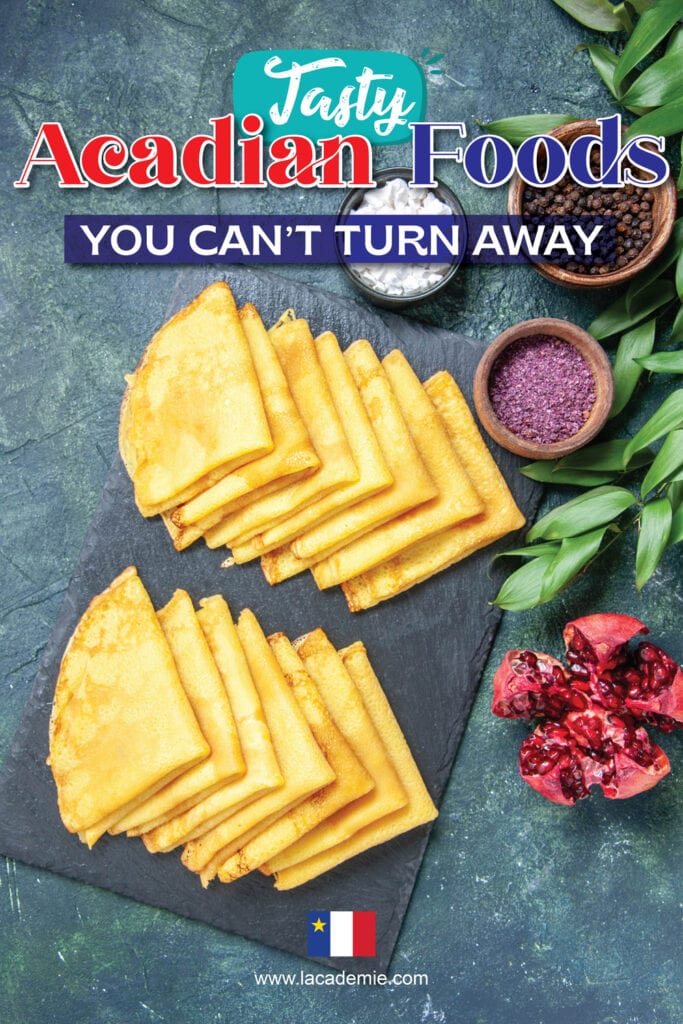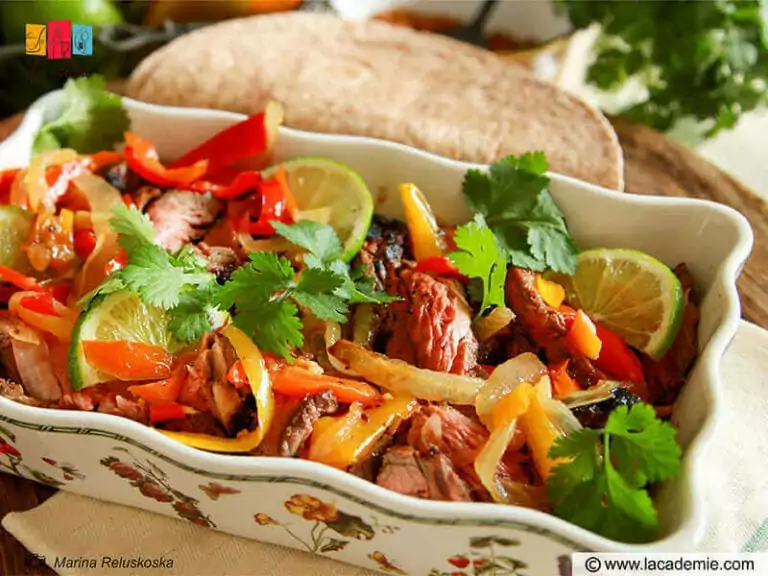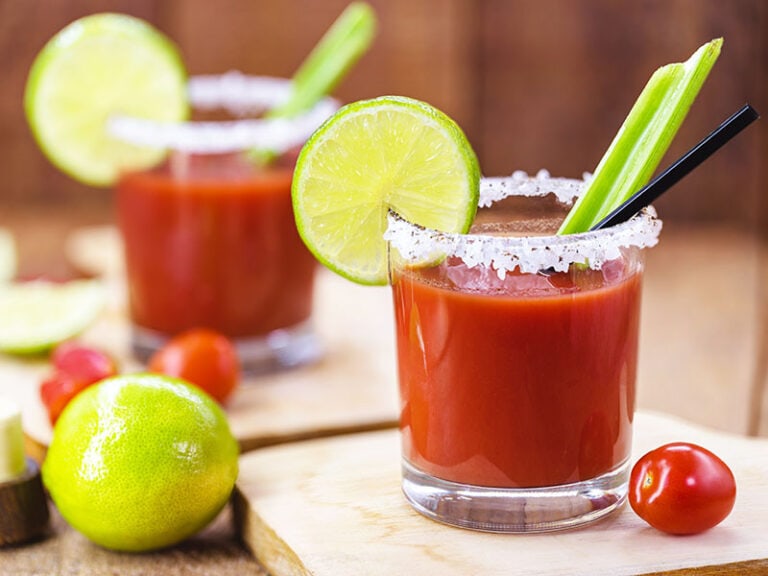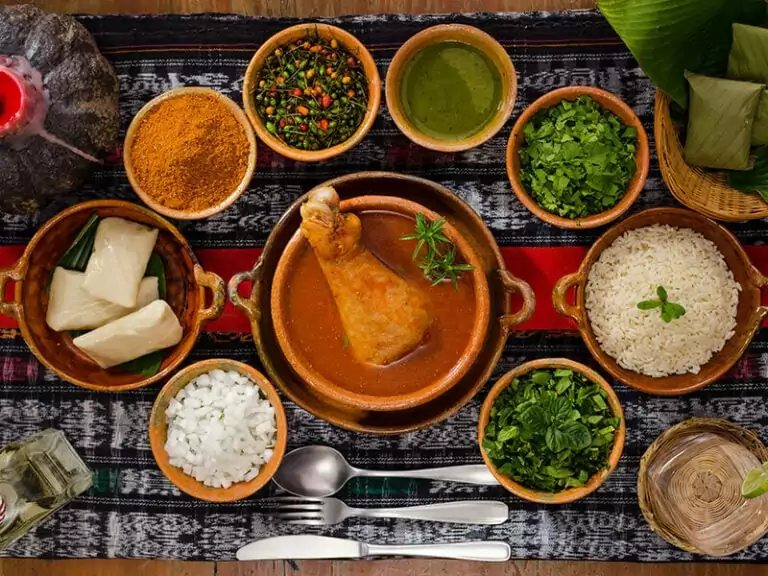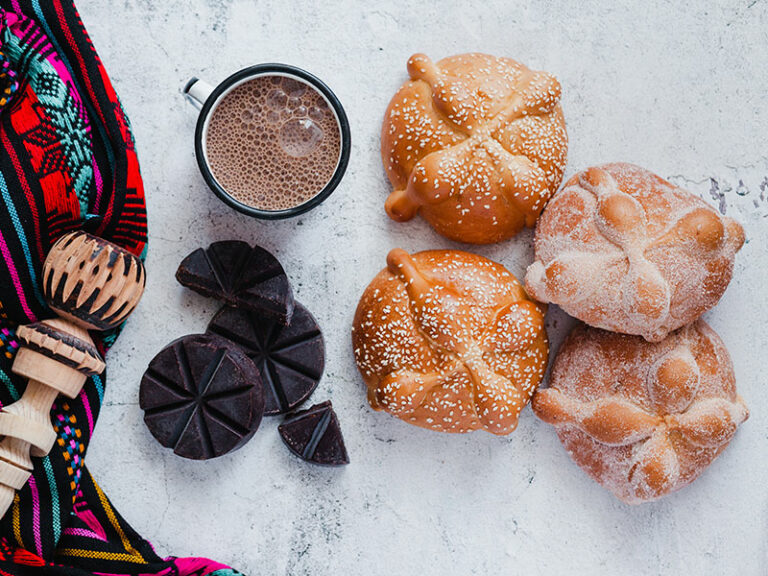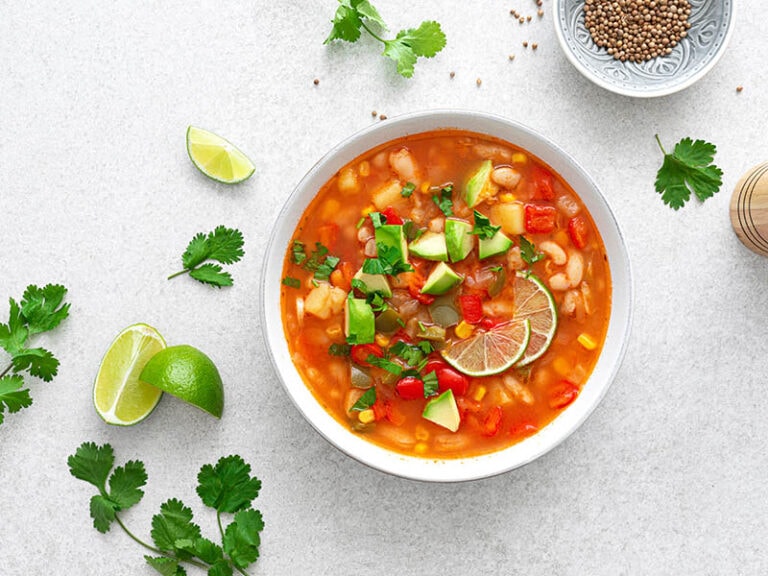The information about Acadian foods is limited. There’s no official writing about this cuisine or the Acadian recipes until the book “Pantry and Palate: Remembering and Rediscovering” by Simon Thibault is published in 2017. It’s time to acknowledge this wonderful gastronomy!
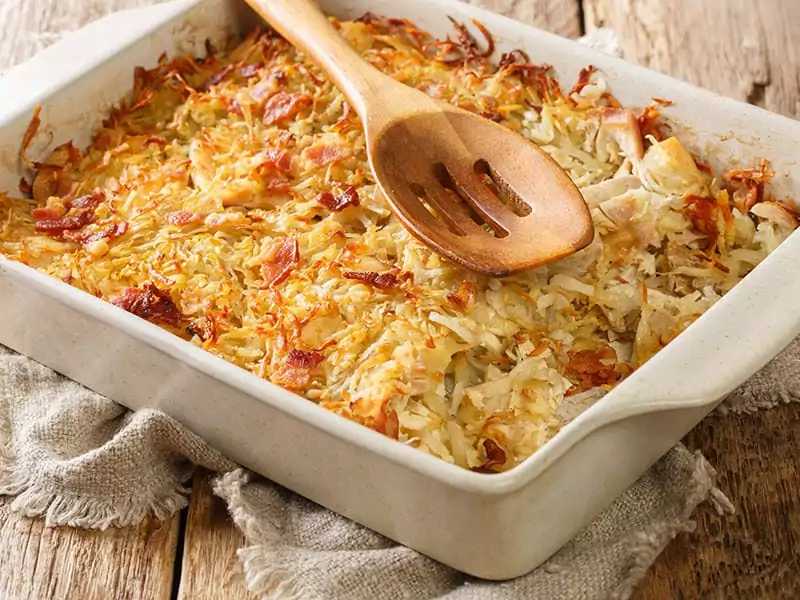
You can look for the book for detailed information about the Acadians’ eating customs. However, you might need a shortcut before getting into the long journey of discovering their cuisine. Therefore, this article is just right for what you need!
1. Poutine Râpée – Potato Dumpling
Poutine Rapee is a traditional Acadian dish that is now mostly available in New Brunswick and perhaps other Acadian regions in Canada. Basically, the folks make this dumpling from both grated and mashed potatoes.
They usually stuff the dumplings with salted pork. Some recipes even require hours of boiling the dumplings on their own. Due to the long cooking process, the Acadians often only prepare it for special occasions, such as Christmas.
The dumplings have a grayish appearance with a bland flavor contrasting to the salty filling. When serving, folks will either sprinkle some peppers on Poutine Rapee or glaze it with molasses. Some effortless cooks may only use white or brown sugar for topping.
Learn how to make the mesmerizing Poutine Rapee for a quick packed meal.
2. Crêpes Râpées – Potato Pancakes
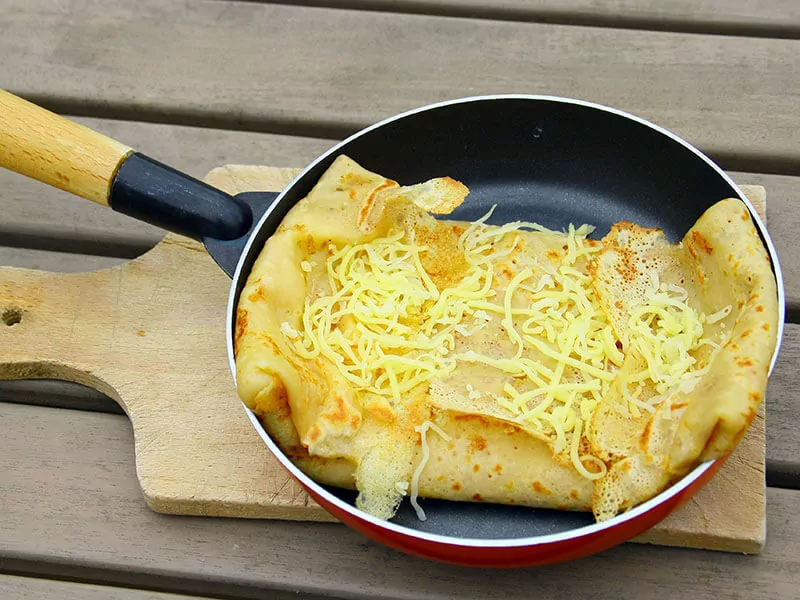
Crepes Rapees is among the traditional morning dishes in Acadia. Indeed, pancakes are a convenient dish you can always enjoy as a course starter, breakfast, or a light meal. Moreover, these treats make a great pair with almost anything from fruit to dairy.
As mentioned above, the Acadians use potatoes abundantly in their diet, and this is one of those staples. They make Crepes Rapees out of grated potatoes and mix it with flour, egg, onion, and pepper before pan-frying the mixture into something crispy.
3. Fricot – Chicken Stew
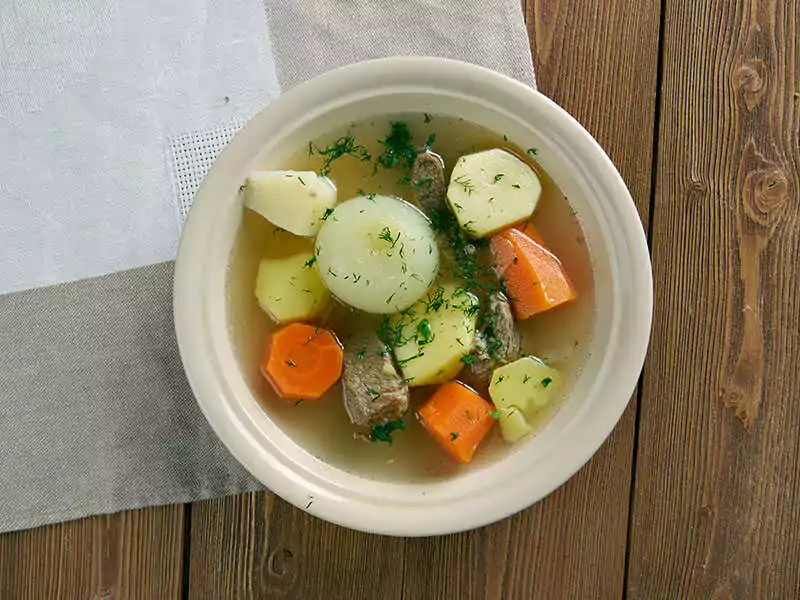
Though Fricot and the famous French Fricassee are relevant in both cooking methods and pronunciation, there is no proof of their relation. However, it also stems from France and eventually became a staple of the Acadians in Canadian gastronomy.
Traditionally, the Acadians prepare Fricot with potatoes, carrots, onions, regional herbs, and old chicken. Due to the lack of supplies in the old days, they considered the chickens that could still lay eggs too valuable for this stew.
Fricot also has dumplings to form a satisfying lunch that all Acadians love. Though some modern methods may only call for wheat flour dumplings, you can use Poutine Rapee for the authentic experience.
A meatless variation was also created during the lean time, and they call it “Fricot a la belette”, meaning “weasel stew”. It somewhat compliments the cooks who are as sly as a weasel to leave the precious meat ingredients out.
In contrast, the Acadians in Pince Edward Island call this meatless stew “fricot a la bazette”, which means “stupid cook’s stew”, indicating the forgo of meat. In some regions, you can also see Fricot made from game animals.
4. Croquettes De Poisson – Fish Cake
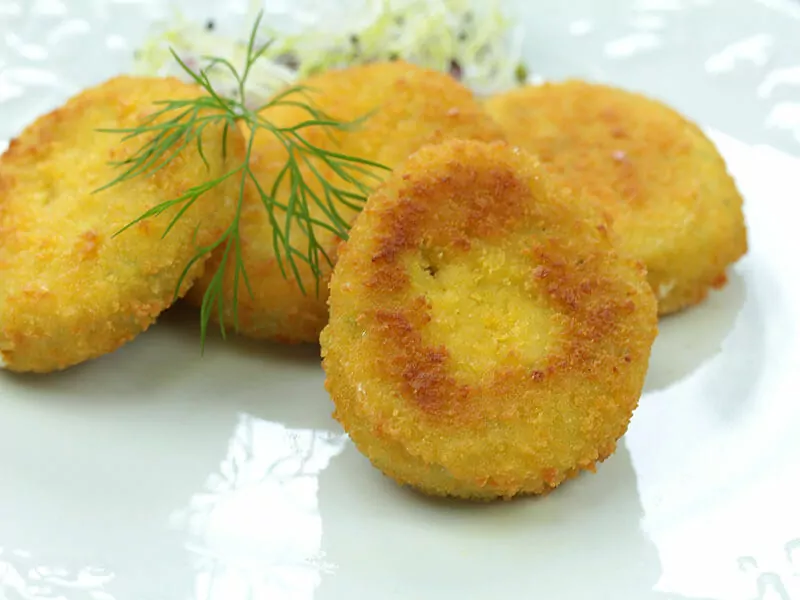
Croquettes or Boulettes de Poisson basically are fish cakes. Since the Acadian regions in Canada have a long coastline, the folks also regularly add fish into their diet. For the fish cakes, they usually use cod, either slated or fresh.
It’s also a classic dish in Acadian cuisine, and once again, they also use mashed potatoes in the mixture. Onions, peppers, and parsley are optional for Croquettes De Poisson. The Acadians normally fry this delicacy in oil, but some regions may also use pork back fat.
Like most other fish cake variations you can find worldwide, Croquettes De Poisson usually comes in uneven round shapes. This dish also makes a great pair with tomato sauce.
5. Râpure – Rappie Pie
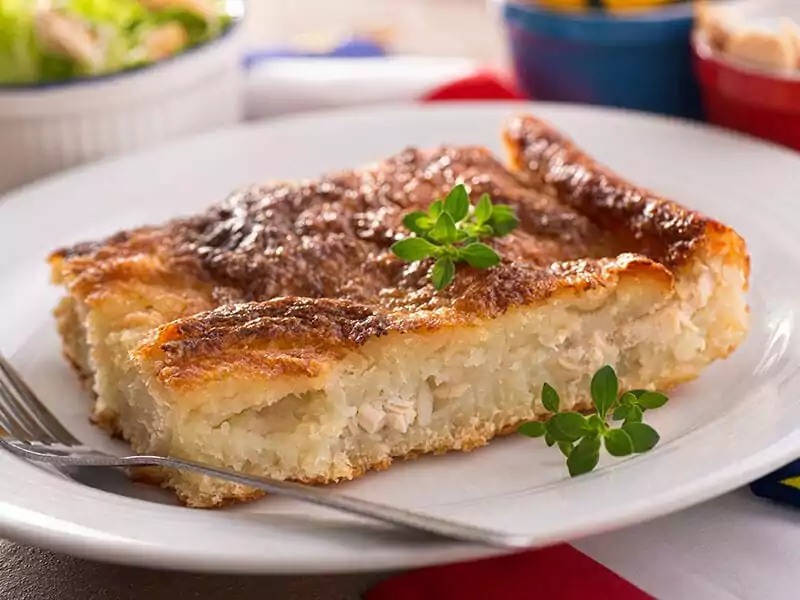
The name of this dish is either derives from “pâte à la râpure” or “patates râpées”. Both of those French phrases relatively mean “grated potatoes”, indicating the central ingredient of this pie.
Folks also believe that the German or the Swiss have taught the Acadians this cooking technique. On the other hand, the rest of the world knows of Rapure as a lookalike of casserole that originates in southwest Nova Scotia, Canada.
Originally, they grated the potato and squeezed it until no liquid remained. Afterward, the cooks mixed it with meat, onion, and broth before baking the mixture until golden brown. The most common meat bases for Rapure are chicken, beef, and bar clams.
6. Cipâte – Sea-Pie
Cipate is a dish from Quebecois cuisine and is also popular among the Acadians. Interestingly, the English name of this delicacy is sea-pie since it’s mostly served for the English sailors, and the filling can either include or exclude seafood.
Basically, the folks prepare Cipate by layering dough and seasoned meat. The meat bases usually are cattle, poultry, seafood, or even game. Modern recipes usually recommend simmering the combination in a pot on low heat.
In addition, the French name of Cipate is “Six-Pâtes”. People believe that it is either derived from the adaptation of the English’s name pronunciation or the 6 times folding of the dough during the cooking process.
7. Tourtière – Meat Pie
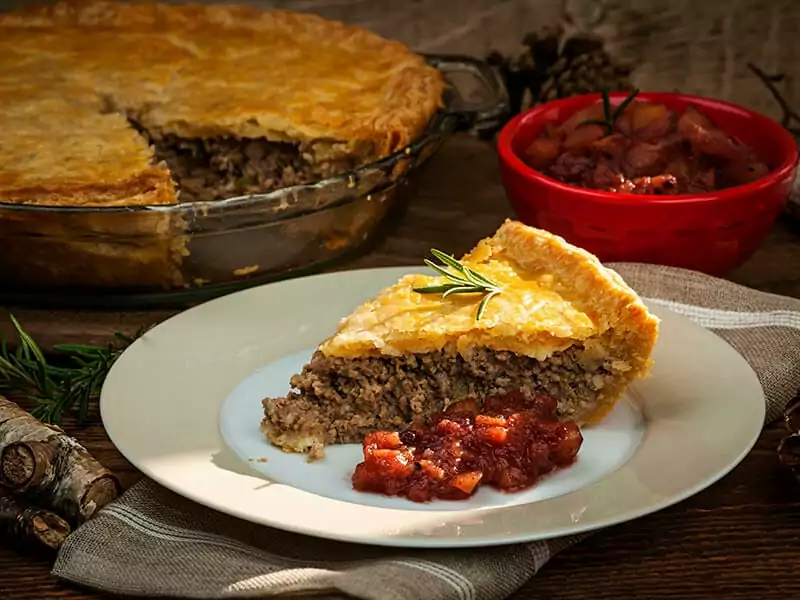
The origin of Tourtiere remains fuzzy nowadays. While many believe the recipe belongs to the French immigrants, the locals in Quebec insist it’s their invention. Despite that, it’s also a culinary staple for the Acadians.
Local folks usually prepare Tourtiere for an ideal evening Acadian meal between Christmas and the New Year celebrations. The meat base for this pie usually is pork, though beef is also a great option. Mashed potatoes are also never absent in this traditional delicacy.
The Acadians combine those central ingredients with regional vegetables, herbs, and spices. Afterward, they cover the combination in a flaky pastry dough before baking it until golden brown. The name of this dish derives from the round mold in which it’s baked.
The Acadians have kept their recipes for generations; check this one for Tourtiere!
8. Pâté Chinois – Shepherd’s Pie
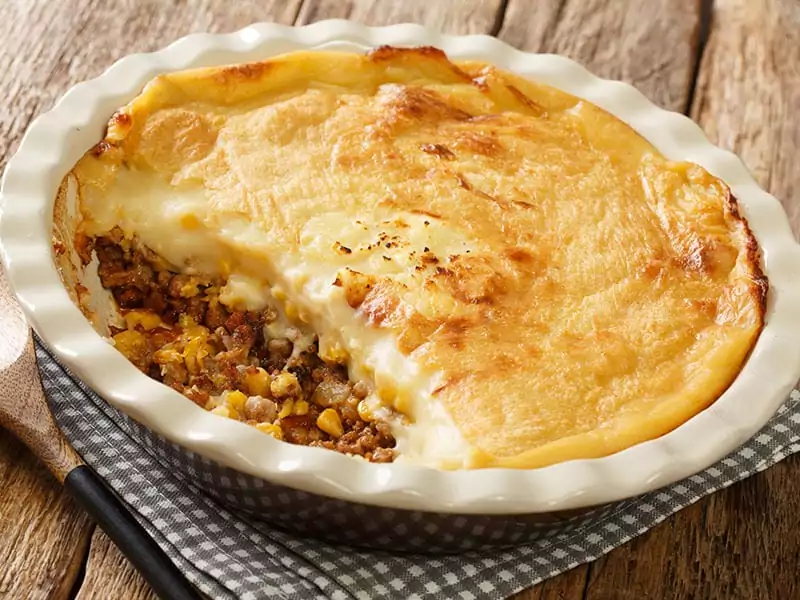
Like Tourtiere, the origin of Pate Chinois remains a mystery. However, an interesting theory states that this dish was an invention of the Chinese during the 19th century when they were in the process of building the Canadian railway.
Hence, the name of this dish in French means “Chinese pie”. It eventually became a staple in both Quebecois and Acadian cuisine. Traditionally, Pate Chinois consists of three layers. The bottom is seasoned meat, usually pork or beef.
The middle layer is corn, and the folks use either whole kernels from the canned corn or creamed one; they also mix them sometimes. As you may have guessed, the irreplaceable ingredient of Acadian foods – mashed potatoes – is the top layer.
9. Ployes – French-Acadian Pancake/Buckwheat Pancake
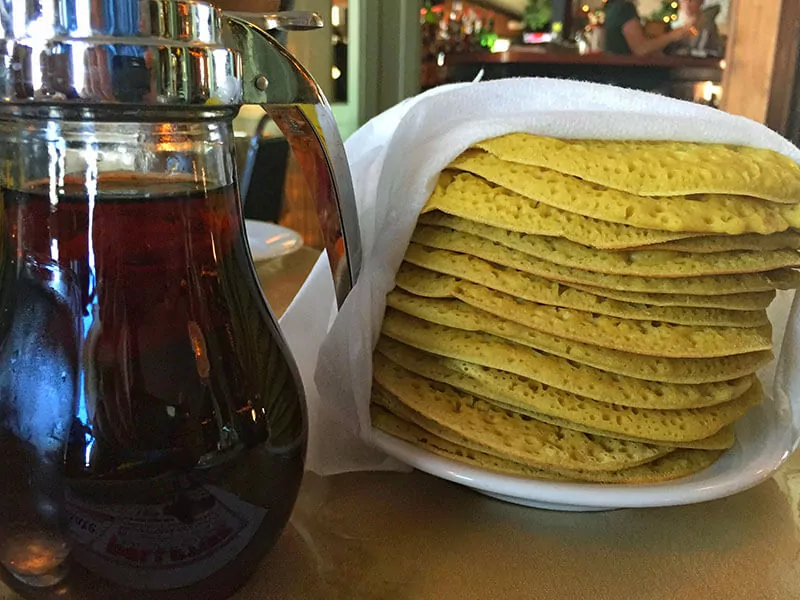
While many mistake Ployes as pancakes, the Acadians actually just cook this flatbread on one side. Nowadays, it’s a famous Acadian sweet treat or side dish throughout Canada, as well as Maine.
This delectable Canadian dessert first appeared in Nova Scotia. It consists of buckwheat starch, flour, baking powder, and water. Hence it’s an easy recipe that you can create at home. Many Acadian families have their twist to elevate the flavor and handle it down for generations.
The folks use this traditional flatbread either in their breakfast, lunch, or dinner as a side dish. However, they also use it as a dessert, combined with molasses, honey, maple syrup, or cream. The traditional way to enjoy this flatbread is to roll it before consuming it.
You’ll regret missing this information about Ployes and the Acadians in Maine.
10. Pets De Sœur – Cinnamon Rolls
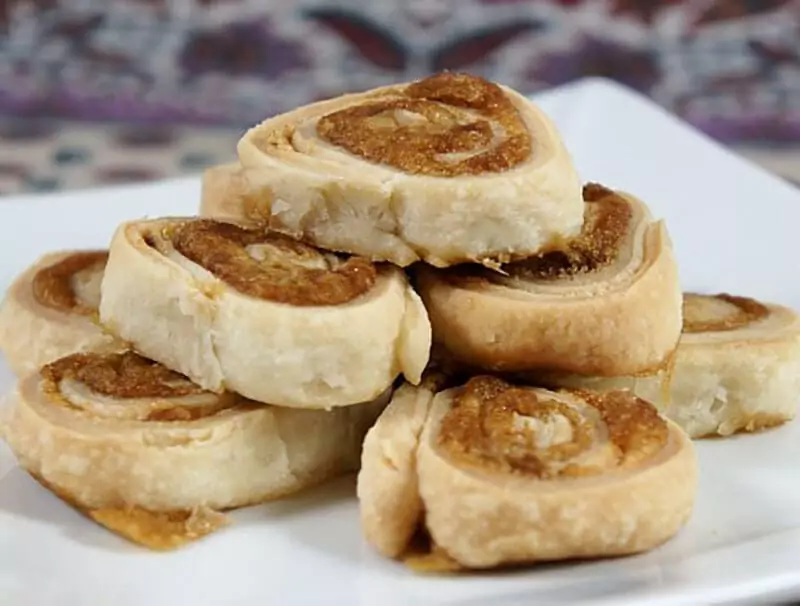
You can assume Pets de Soeur as a variation of cinnamon rolls but leave out the leavening agents. The remaining ingredients are almost the same, which are cinnamon, milk flaky crust dough, butter, and molasses. It’s a primal dish on Christmas Eve to the Acadians.
The name of this dish in French means “the nun’s fart”. Though it’s actually an invention of the nuns in the Acadian and Quebec regions, the unappetizing name remains unexplained. Nombrils de Soldats or the “Soldier navels” is a variation of Pet de Soeur but without milk.
11. Pouding Chômeur – The Poor Man’s Pudding
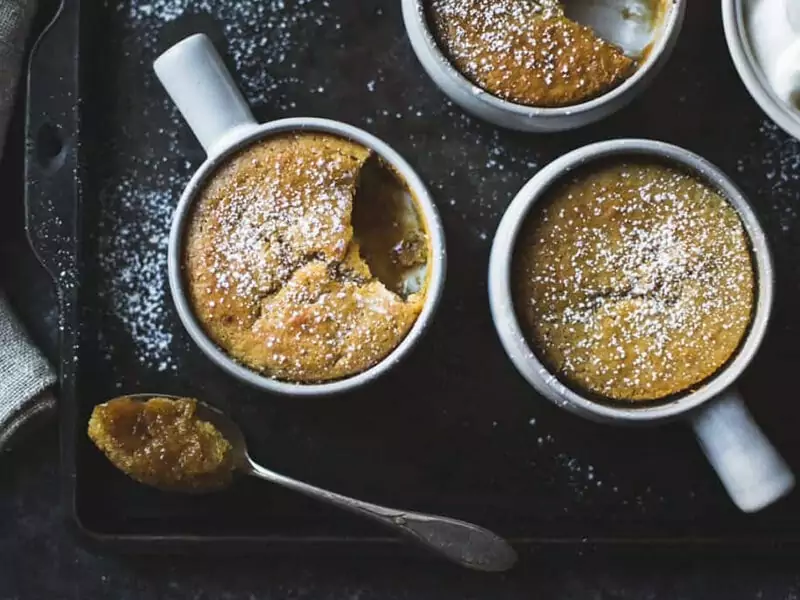
Pouding Chomeur is another dish that stems from the Quebecois cuisine but eventually becomes a staple to the Acadians and throughout Canada. Its name literally means “the poor man’s pudding”, and there’s a not-so-delightful story behind this dessert.
It was an invention of the women factory workers during the Great Depression of the 1930s. Due to the lack of finance, they utilized all that was available to form Pouding Chomeur. Basically, they simply combine cake batter with maple syrup and bake the combination.
They either pour over or cover the batter with the syrup. During the worst of the Depression, they even just used white or brown sugar for the sweetening and stale bread for the base.
Who are The Acadians and What’s So Special About Their Cuisine?
- Acadia Overview:
- Not just a national park in Maine, but also a historical region.
- Not to be confused with Arcadia county in Florida.
- Originated as a New French colony in the 17th and 18th centuries.
- Present-day regions include Nova Scotia, New Brunswick, and Prince Edward Island in Canada.
- Large Acadian settlements are found in southern Louisiana, called the Acadiana region. Some also settled in Maine.
- Acadian Descendants:
- In the U.S., they are known as Cajuns.
- Americans use ‘Cajuns’ to describe anyone from southern Louisiana, not necessarily Acadian descendants.
- Acadian Gastronomy:
- Shares similarities with Canadian, Louisianian, and Cajun cuisines.
- Also related to Quebecois cuisine due to history and proximity.
- Ingredients include fruits, vegetables, cattle, dairy, seafood, and potatoes.
- Historically, Acadians hunted game like deer, jackrabbit, and ruffed goose, which remains a cultural staple in some regions.
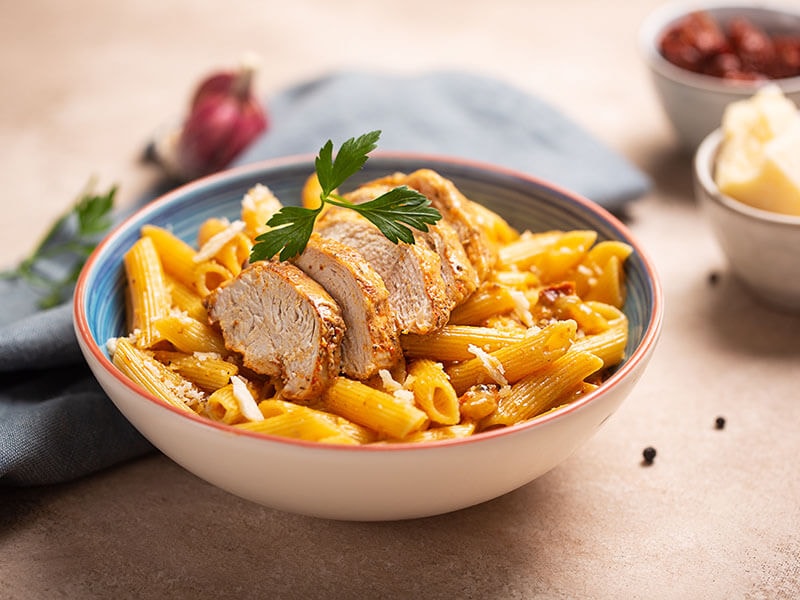
Everlasting Deliciousness of Acadian Cuisine!
Even though the colonization didn’t last for too long and ended centuries ago, the Acadians’ blood and delicious recipes may exist perhaps till the end of time.
There are more interesting things about these people that I can’t cover just in one article, but here are some of their most famous dishes that you’ll regret not trying.
It would be best if you acknowledged this cuisine and shared it with your beloved ones. Also, feel free to spread your thoughts or questions about the Acadians and their magnificent gastronomy in the comment section!
